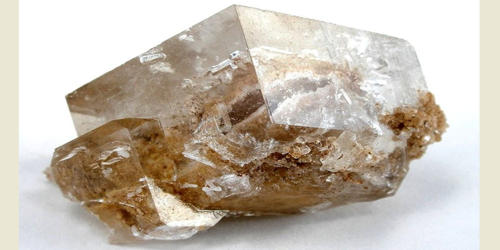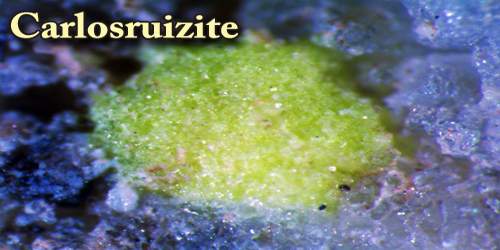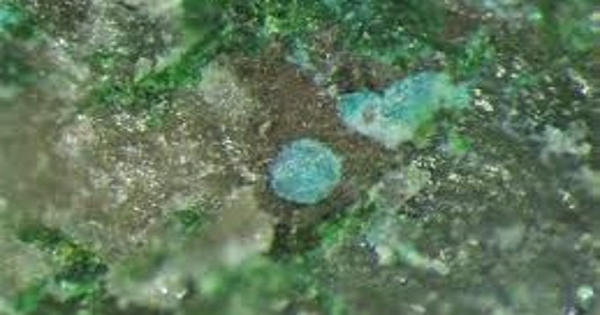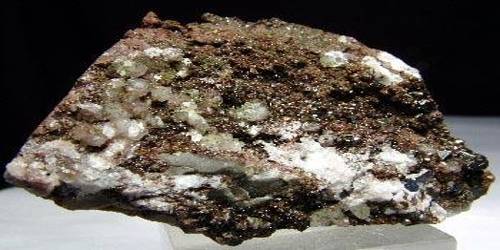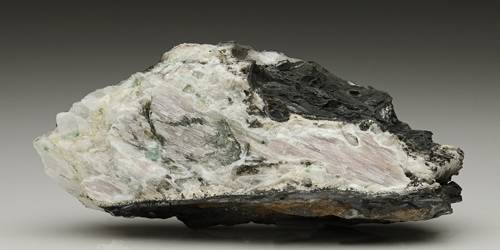Mathesiusite is a new uranyl vanadate-sulfate mineral. It is a sulfate mineral containing potassium, vanadium, and uranium and has the chemical formula: K5(UO2)4(SO4)4(VO5)·4(H2O). It is a secondary mineral formed during post-mining processes. It is a secondary mineral formed during post-mining processes.
It was discovered in the Jáchymov mining district, Czech Republic, and named in 2013 after Johannes Mathesius (1504–1565), who studied minerals from the area (known then as Joachimsthal, Bohemia).
General Information
- Category: Sulfate mineral
- Formula: (repeating unit) K5(UO2)4(SO4)4(VO5)·4(H2O)
- Crystal system: Tetragonal
- Color Yellowish green.
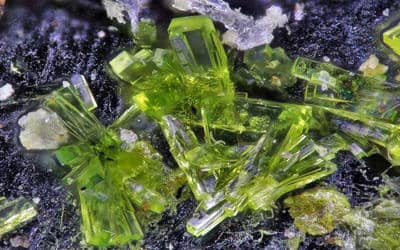
Properties
ness is ~2. Mathesiusite is brittle with an uneven fracture and perfect cleavage on {110} and weaker on {001}. The calculated density based on the empirical formula is 4.02 g/cm3.
- Crystal habit: Needles <0.2 mm in length
- Cleavage: Perfect {010}, good {001}
- Fracture: Irregular/Uneven
- Tenacity: Brittle
- Mohs scale hardness: 2
- Streak: Greenish white
- Specific gravity: 4.02 (calculated)
- Optical properties: Uniaxial (-)
Occurrences
It is a rare post-mining, secondary mineral in the underground workings in a polymetallic hydrothermal vein-type deposit.
Mathesiusite is a new uranyl vanadate-sulfate mineral from Jáchymov, Western Bohemia, Czech Republic, which occurs on fractures of gangue associated with adolfpateraite, schoepite, čejkaite, zippeite, gypsum, and a new unnamed [K-UO2-SO4] mineral. It is a secondary mineral formed during post-mining processes.
It was named in honor of Johannes Mathesius (24 June 1504, Rochlitz, Saxony – 7 October 1565, St. Joachimsthal, Bohemia), a Lutheran parson and humanist. He was also an “amateur mineralogist” and a friend of Georg Agricola, “the father of mineralogy”.
Association: Adolfpateraite, schoepite, čejkaite, zippeite, gypsum.
Information Source:
